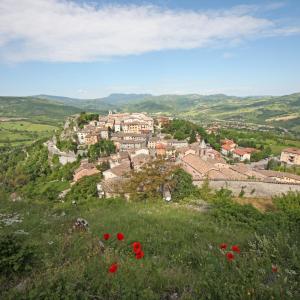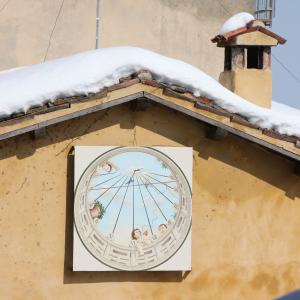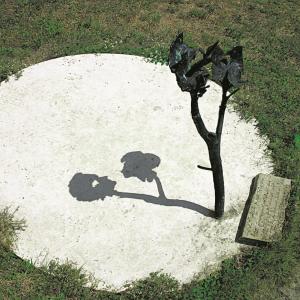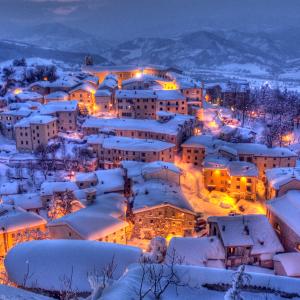Pennabilli the Road of Sundials a walk among seven artistic sundials
Imagine a place where nature and art embrace, where time seems to flow to the rhythm of the sun and where every corner tells a story. Pennabilli is a hidden jewel in the upper Marecchia Valley, a true 'place of the soul' that enchants and surprises.
Duration: 1h30
Distance: 3Km
Means of transport: on foot
The Sundial Road a journey through time (and space!)
The Sundial Road a journey through time (and space!)
Forget the watch on your wrist, here time is read in the shade of the sun. Take the 'Sundial Road', a curious walk among seven artistic sundials, each with its own history and charm.
The walk begins in the lively Piazza Vittorio Emanuele II, the beating heart of Pennabilli, and then enters the historic village, to discover these wonders of time:
- "Meridiana dell'incontro": an embrace between Fellini and his muse Giulietta Masina, with a touch of magic that only Tonino Guerra could create. In the early afternoon, the bronze sculpture of two pigeons casts the shadow of the two lovers on the stone.
- "Human sundial": you yourself become the needle of the clock, casting your shadow on the dial!
- "Putti around a well": a plunge into the past, with the hours marked by the rhythms of monastic life.
- "The sun over the hills": a hymn to the sun, whose light guides us through the hours of the day.
- "Martyrdom of Saint Sebastian": a work of art marking time with arrows and shadows, a true spectacle for the eyes.
- "Island on the Sea": a journey through time, with a measuring system that takes us back to the Middle Ages.
- "The Duck with the Blue Neck" and "The Clock on the Beach": two paintings by Tonino Guerra that become clocks, a perfect combination of art and science.
The Road of Sundials is just one of Pennabilli's many treasures. Between unspoilt nature, medieval villages and unique works of art, this town will win you over with its timeless beauty.
Useful tips for visiting:
- Wear comfortable shoes, the Strada delle Meridiane winds its way through alleys and uphill.
- Take a camera with you, every corner deserves a shot!
- Be enchanted by the magic of the place and its slow, relaxing pace.
Pennabilli is waiting for you, come and discover time flowing to the rhythm of the sun!



